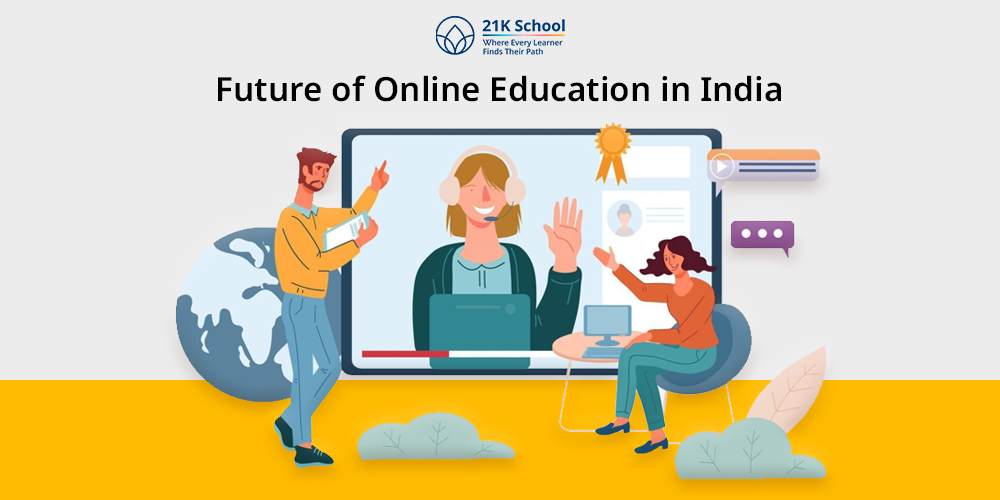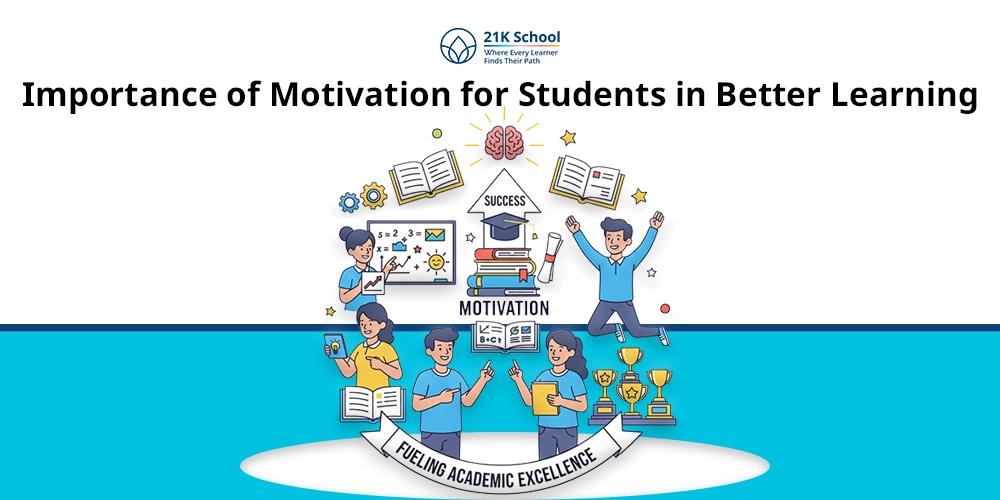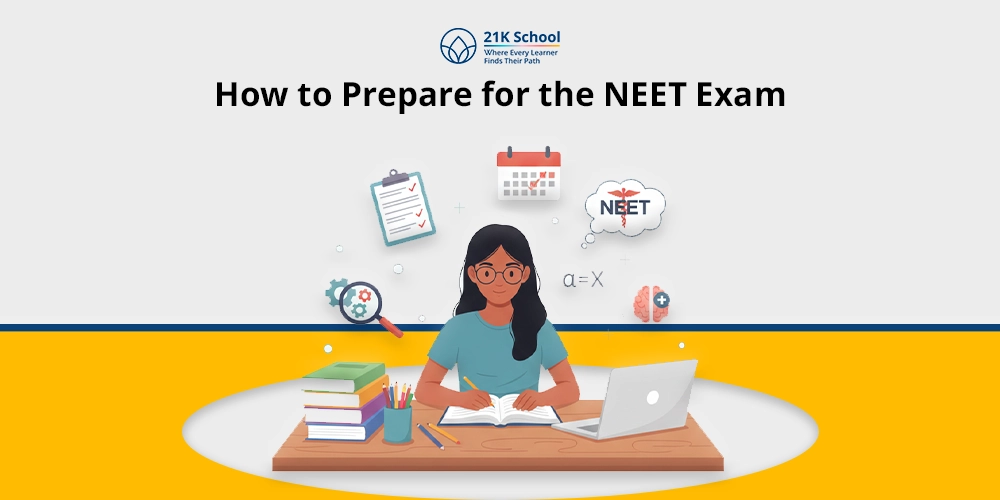
Studying online was at first a choice available to only a few. However, today, it is required by everyone in India. The change to online learning has occurred everywhere in education.
Thanks to fast technological evolution, more people have internet access after the COVID-19 pandemic. Since India has the biggest youth population worldwide.
Digital education can help all young people learn equally and prepare for the changing job market. The article examines the present state, rising trends, rule guidelines and expected future developments of online education in India.
Table of Contents
- The Current State of Online Education in India
- New Trends in Online Education in India
- The Future Role of Government and Policy on Education under the NEP
- Future Outlook For Online Education in India: What to Expect
- Advantages of Online Education in India
- Challenges for Online Education in India
- Conclusion
The Current State of Online Education in India
There has been rapid and significant growth in India’s online education sector over the past ten years. SWAYAM, DIKSHA and e-Pathshala are introduced by the government.
Plus with the increasing internet and smartphone users, online learning is more accessible than ever.
Because of BYJU’S, Unacademy, Vedantu, UpGrad and Coursera, people in villages can now get access to high-quality education. Thanks to offerings from NPTEL, millions can now benefit from university-level instruction provided by the IITs.
In 2024, the Indian EdTech market was worth USD 7.5 billion. And its growth is predicted to be led by K–12 education, test prep and vocational training.
New Trends in Online Education in India
With continued support from technology and government-based platforms available digitally, India is reaching limits in Online education. Several trends that are being simultaneously followed are as follows:
- Combining Online and Face-to-Face Learning:
Hybrid approaches which mix in-person and digital education, are becoming more widespread after the pandemic.
Various educational institutions are now making use of online lectures, virtual homework and digital testing. These are to give students more options and greater inclusivity.
- Accessible and Flexible:
Online learning makes it easier for rural students, employed people and stay-at-home individuals who found education hard to access previously.
Because of asynchronous content delivery, students have the option to learn as slowly or as quickly as they want.
- Gamifying the learning experience:
When learning is gamified, it gets more enjoyable and competitive at the same time. They make use of badges, leaderboards, points and quizzes to keep students interested and improve their learning.
With simulations and 3D models, students better remember and understand the new information. This fosters game-based learning in students.
- AI and Machine Learning in Schools:
Through personalized learning methods, predictive analytics, adaptive quizzes and tutorials, AI is changing the way digital education works.
- Virtual Labs and Augmented Reality:
Virtual labs in STEM education help students carry out experiments and use advanced tools even when they are not in a real lab. People are learning medical, engineering and hospitality skills with the help of AR and VR technologies.
- Content for Regional Languages:
Inclusivity in learning is now possible thanks to platforms providing content in several languages. These platforms are creating educational resources in Hindi, Bengali, Tamil and Marathi to support students learning in their native tongue.
- Personalized Learning:
Now, students use education plans created for them by AI based on their learning style and abilities. This approach leads to more understanding and motivates students to learn by themselves.
Personalized learning has been proven to be one of the best features of online education till time.
- More Credible and Sustainable:
Because online education is on the rise, digital qualifications from reputable sources are gaining recognition. Also, the model helps decrease paper usage and emissions made from travel.
- Develop Your Skills:
The way children are taught is moving toward practical hands-on lessons rather than just memorization. Online portals provide classes in coding, data science, design, entrepreneurship and soft skills, making education fit for careers.
The Future Role of Government and Policy on Education under the NEP
National Education Policy (NEP) 2020, has provided a modern approach for including technology in education. Various important policy choices are made in the following ways:
- Enhancing DIKSHA to cover more learning resources
- Forming a National Educational Technology Forum (NETF)
- Supporting availability of learning online
- Mixed systems for learning at the college level
- Training teachers on how to use technology in teaching
It is acknowledged in NEP that online education initiates inclusive, equitable and quality education. Thus, paving the way for lasting change in the system.
Future Outlook For Online Education in India: What to Expect
With the established advancements and growing demands of online education in India, its future looks bright. We are fortunate enough that we will be noticing other major changes that will be incorporated in digital learning.
1. Bringing AI and Big Data together
Using Big Data will help education platforms understand students’ actions, expect their results and give them newer educational data. Real-time monitoring and data analysis will help AI improve the outcomes of learning.
2. Global Classrooms
Because of more cross-border collaboration, Indian students take part in lectures, courses and certifications offered by teachers from foreign universities. Therefore, encouraging students to become global citizens.
3. Ed-tech Startups Have Grown Quickly
Startups in India are flourishing, especially in education, with niche services for kids, test preparation and adult learners. Be ready for a range of products, new solutions and increasing presence abroad.
4. More Efforts from the Government
Ed-tech will be guided more by governments, who will ensure high standards, equality and safety of student data. If more people can buy devices and data on favorable terms in rural regions, the problem of having fewer online users will improve.
5. Chatbots and AI Teachers
More and more, AI instructors and chatbots will offer instant support, answer homework queries, translate texts and enable adaptive questions. It will support both teachers and students by helping them to perform better.
Advantages of Online Education in India
Online education has been the talk of the show in present times due to its accessibility, versatility, and affordability. Other benefits that need to be shown off of e-learning are mentioned further.
1. Closing the Gap between Rural and Urban Areas
Online courses offer excellent learning, helping rural areas catch up to the education in big urban centers. Having only a smartphone and the internet is all that is required for a student.
2. Developing Skills for Work
Platforms online can help anyone get ready for their next job with skills in programming, digital marketing or data analysis. Certifications given by courses are commonly respected by employers which helps with finding a job.
Here are some of the best future technology jobs in the 21st century.
3. Tackling the Problem of Lack of Teachers
In different Indian areas, the ratio of teachers to students is not enough. By using online platforms, a single lecture by an expert can reach a huge audience without relying on local instructors.
4. Environmentally Friendly
The use of online learning reduces the amount of carbon released by travel, usage of supplies and buildings for in-person classes. So, no doubt how and why online education is continuously making its place in present days.
Challenges for Online Education in India
Besides the pros that make online education unmatchable in supporting and reaching millions for learning. There are few limitations that would require consideration.
1. Digital Divide
There are many challenges in rural and tribal areas, mainly due to the lack of internet, devices and digital literacy. Left unchanged, online classes may end up making existing disparities in schools even bigger.
2. Lack of Involvement
Young people may get tired of looking at a screen and may feel detached due to online learning. If we do not interact in person, our motivation and ability to pay attention may drop.
3. Quality Control
Since the ed-tech market is flourishing without strong rules, the standards for education materials and assessments differ widely. Constant quality checks and assessments are required for smoother functioning of online courses.
4. Teacher Training
Because educators are not properly prepared, it is difficult for many to use digital technologies and adapt to online teaching. Constant digital pedagogy training programs are necessary at this time.
Conclusion
Using the internet for education in India is an established trend. Including more people and customizing learning, technology is making a major impact on how knowledge is exchanged.
Thanks to the efforts of government, ed-tech firms and other partners, India is well on its way to leading digital education.
Still, to succeed, we must address the digital divide, ensure the quality of our content and equip teachers. If these problems are dealt with responsibility, everyone in India could get an education using only their phone.


